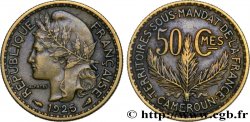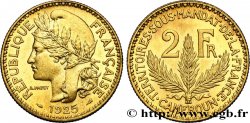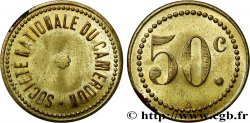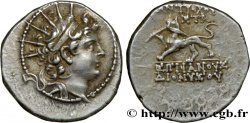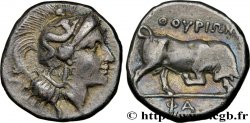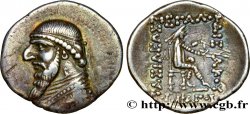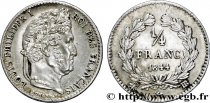Live auction - fco_604418 - CAMERUN - Mandato Francese 1 Franc léger - Essai de frappe de 1 franc Morlon - 4 grammes 1926 Paris
Devi Sign-in ed essere un offerente approvato fare un'offerta, Login per fare offerte. Conti sono soggetti ad approvazione e di approvazione sono raggiunti entro 48 ore. Non aspettare fino al giorno di una vendita si chiude per registrarti.Confermando la tua offerta su questo oggetto ti impegni ad un contratto legalmente vincolante per l'acquisto di questo prodotto e fare clic su «offerta» costituisce accettazione dei termini di utilizzo de live auctions cgb.fr.
Offerta deve essere collocato in euro gli importi interi vendita only.The si chiuderà al momento sulla descrizione dell'oggetto, eventuali offerte pervenute al sito dopo l'orario di chiusura non verranno eseguite. Volte transmition possono variare e le offerte potrebbero essere respinto se si attende per gli ultimi secondi. Per ulteriori informazioni ckeck le FAQ Live auction.
Le offerte vincenti saranno sottomesse ai 18% per spese di compartecipazione alla vendita.
Le offerte vincenti saranno sottomesse ai 18% per spese di compartecipazione alla vendita.
| Valutazione : | 800 € |
| Prezzo : | no offerta |
| Offerta maxima : | no offerta |
| Data di fine vendita : | 08 settembre 2020 18:15:53 |
Tipo : 1 Franc léger - Essai de frappe de 1 franc Morlon - 4 grammes
Data: 1926
Nome della officina / città: Paris
Metallo : bronzo-alluminio
Diametro : 23,12 mm
Asse di coniazione : 6 h.
Peso : 4,02 g.
Orlo : striée
Grado di rarità : R3
Commenti sullo stato di conservazione:
Petites taches de part et d’autre dans la patine
Diritto
Titolatura diritto : RÉPUBLIQUE - FRANÇAISE / 1926.
Descrittivo diritto : Marianne à gauche, portant le bonnet phrygien et couronnée de lauriers.
Rovescio
Titolatura rovescio : .TERRITOIRES . SOUS . MANDAT . DE . LA . FRANCE. / TOGO / 1 - FR..
Descrittivo rovescio : trois palmes dressées liées par un ruban.
Commento
Millésime inconnu, non référencé, ni en essai ni en frappe courante. Les années connues pour le Togo se limitent à 1924, essai et frappe courante, et 1925, frappe courante.
La seule explication plausible, car il faut noter une large différence de poids, est de considérer cette frappe, comme celle des 25 centimes Patey 1907, autre année inconnue, comme des essais de frappe dédiés à un tout autre modèle.
Lequel ? Du bronze aluminium, 4 grammes, diamètre 23 mm, l’année 1926, tout indique un essai de frappe d’une 1 franc Morlon. Malheureusement, sans preuve formelle.
On peut aussi penser que l’année 1926 avait été prévue pour le Togo, que les coins furent réalisés et que la frappe specimen resta la seule. Mais ceci n’expliquerait pas la différence de poids.
Toute la série de ces frappes pour le Togo et le Cameroun des collections Pierre et Michel ont en commun une caractéristique : les états de conservation. En effet, ces monnaies, que leurs poids soient au standard de l’émission coloniale ou sur l’étalon des Morlon, sont absolument neuves et leurs seules imperfections proviennent de manipulations, même pas de chocs entre des monnaies mais des traces de doigts. L’absence de ces petits chocs produits soit par la chute des monnaies tombant dans des bacs après frappe ou par les manipulations en sacs est totale. On pourrait donc même penser que les frappes ont été faites hors circuit industriel. Or, pour ces types, les exemplaires connus, dans le meilleur des cas et les plus belles collections, sont des exemplaires en petits superbes, la circulation en Afrique n’étant manifestement pas une sinécure pour monnaies et rien n’ayant été conservé hors circulation, en métropole.
Les exemplaires des collections Pierre et Michel ne peuvent pas être des prélèvements avant envois en Afrique : nous n’avons jamais vu de tels prélèvements, sur plusieurs millésimes différents, plusieurs valeurs faciales différentes, deux pays différents, être ainsi conservés. Autre remarque, les coins utilisés ne sont pas neufs et viennent d’être repolis : on voit le plus souvent des stries de polissage dans les champs et les reliefs sont uniformément mats sur des champs miroir ; un prélèvement se serait plutôt fait en début de production, donc avec des coins neufs, plus ou moins uniformément brillants.
On a donc tout lieu de penser que la frappe de ces exemplaires s’est faite complètement en dehors de la production standard, et après celle-ci puisque avec des coins repolis, donc probablement en 1926/1927.
Pourquoi ? Manifestement, quand on regarde les poids, le métal, les diamètres, l’époque, la seule hypothèse viable est de considérer ces monnaies comme des essais de frappe de la série Morlon. Cela explique surtout pourquoi ces exemplaires ont été conservés, sont neufs, frappés hors circuit industriel, et présentent ces variations de poids.
Unknown vintage, not referenced, neither in trial nor in current strike. The years known for Togo are limited to 1924, trial and current strike, and 1925, current strike.
The only plausible explanation, since a large difference in weight must be noted, is to consider this strike, like that of the 25 centimes Patey 1907, another unknown year, as test strikes dedicated to a completely different model..
Which one? Aluminum bronze, 4 grams, diameter 23 mm, year 1926, everything indicates an attempt to strike a 1 franc Morlon. Unfortunately, without formal proof.
We can also think that the year 1926 had been planned for Togo, that the dies were made and that the specimen strike remained the only one. But this would not explain the difference in weight..
The entire series of these strikes for Togo and Cameroon from the Pierre and Michel collections have one characteristic in common: the states of conservation. In fact, these coins, whether their weights are at the standard of the colonial issue or on the Morlon standard, are absolutely new and their only imperfections come from handling, not even from shocks between coins but from fingerprints.. The absence of these small shocks produced either by the fall of coins falling into bins after striking or by handling in bags is total.. We could therefore even think that the strikes were made outside the industrial circuit.. Now, for these types, the known examples, in the best cases and the most beautiful collections, are small superb examples, circulation in Africa clearly not being a sinecure for coins and nothing having been preserved outside circulation, in mainland France..
The examples in the Pierre and Michel collections cannot be samples taken before being sent to Africa: we have never seen such samples, from several different vintages, several different face values, two different countries, being preserved in this way.. Another note, the corners used are not new and have just been repolished: we most often see polishing streaks in the fields and the reliefs are uniformly matt on mirror fields; a sample would rather have been taken at the start of production, therefore with new corners, more or less uniformly shiny.
We therefore have every reason to believe that the striking of these examples was done completely outside of standard production, and after it since with repolished dies, therefore probably in 1926/1927.
Why? Obviously, when we look at the weights, the metal, the diameters, the period, the only viable hypothesis is to consider these coins as test strikes of the Morlon series.. This mainly explains why these examples have been preserved, are new, struck outside the industrial circuit, and present these variations in weight.
La seule explication plausible, car il faut noter une large différence de poids, est de considérer cette frappe, comme celle des 25 centimes Patey 1907, autre année inconnue, comme des essais de frappe dédiés à un tout autre modèle.
Lequel ? Du bronze aluminium, 4 grammes, diamètre 23 mm, l’année 1926, tout indique un essai de frappe d’une 1 franc Morlon. Malheureusement, sans preuve formelle.
On peut aussi penser que l’année 1926 avait été prévue pour le Togo, que les coins furent réalisés et que la frappe specimen resta la seule. Mais ceci n’expliquerait pas la différence de poids.
Toute la série de ces frappes pour le Togo et le Cameroun des collections Pierre et Michel ont en commun une caractéristique : les états de conservation. En effet, ces monnaies, que leurs poids soient au standard de l’émission coloniale ou sur l’étalon des Morlon, sont absolument neuves et leurs seules imperfections proviennent de manipulations, même pas de chocs entre des monnaies mais des traces de doigts. L’absence de ces petits chocs produits soit par la chute des monnaies tombant dans des bacs après frappe ou par les manipulations en sacs est totale. On pourrait donc même penser que les frappes ont été faites hors circuit industriel. Or, pour ces types, les exemplaires connus, dans le meilleur des cas et les plus belles collections, sont des exemplaires en petits superbes, la circulation en Afrique n’étant manifestement pas une sinécure pour monnaies et rien n’ayant été conservé hors circulation, en métropole.
Les exemplaires des collections Pierre et Michel ne peuvent pas être des prélèvements avant envois en Afrique : nous n’avons jamais vu de tels prélèvements, sur plusieurs millésimes différents, plusieurs valeurs faciales différentes, deux pays différents, être ainsi conservés. Autre remarque, les coins utilisés ne sont pas neufs et viennent d’être repolis : on voit le plus souvent des stries de polissage dans les champs et les reliefs sont uniformément mats sur des champs miroir ; un prélèvement se serait plutôt fait en début de production, donc avec des coins neufs, plus ou moins uniformément brillants.
On a donc tout lieu de penser que la frappe de ces exemplaires s’est faite complètement en dehors de la production standard, et après celle-ci puisque avec des coins repolis, donc probablement en 1926/1927.
Pourquoi ? Manifestement, quand on regarde les poids, le métal, les diamètres, l’époque, la seule hypothèse viable est de considérer ces monnaies comme des essais de frappe de la série Morlon. Cela explique surtout pourquoi ces exemplaires ont été conservés, sont neufs, frappés hors circuit industriel, et présentent ces variations de poids.
Unknown vintage, not referenced, neither in trial nor in current strike. The years known for Togo are limited to 1924, trial and current strike, and 1925, current strike.
The only plausible explanation, since a large difference in weight must be noted, is to consider this strike, like that of the 25 centimes Patey 1907, another unknown year, as test strikes dedicated to a completely different model..
Which one? Aluminum bronze, 4 grams, diameter 23 mm, year 1926, everything indicates an attempt to strike a 1 franc Morlon. Unfortunately, without formal proof.
We can also think that the year 1926 had been planned for Togo, that the dies were made and that the specimen strike remained the only one. But this would not explain the difference in weight..
The entire series of these strikes for Togo and Cameroon from the Pierre and Michel collections have one characteristic in common: the states of conservation. In fact, these coins, whether their weights are at the standard of the colonial issue or on the Morlon standard, are absolutely new and their only imperfections come from handling, not even from shocks between coins but from fingerprints.. The absence of these small shocks produced either by the fall of coins falling into bins after striking or by handling in bags is total.. We could therefore even think that the strikes were made outside the industrial circuit.. Now, for these types, the known examples, in the best cases and the most beautiful collections, are small superb examples, circulation in Africa clearly not being a sinecure for coins and nothing having been preserved outside circulation, in mainland France..
The examples in the Pierre and Michel collections cannot be samples taken before being sent to Africa: we have never seen such samples, from several different vintages, several different face values, two different countries, being preserved in this way.. Another note, the corners used are not new and have just been repolished: we most often see polishing streaks in the fields and the reliefs are uniformly matt on mirror fields; a sample would rather have been taken at the start of production, therefore with new corners, more or less uniformly shiny.
We therefore have every reason to believe that the striking of these examples was done completely outside of standard production, and after it since with repolished dies, therefore probably in 1926/1927.
Why? Obviously, when we look at the weights, the metal, the diameters, the period, the only viable hypothesis is to consider these coins as test strikes of the Morlon series.. This mainly explains why these examples have been preserved, are new, struck outside the industrial circuit, and present these variations in weight.







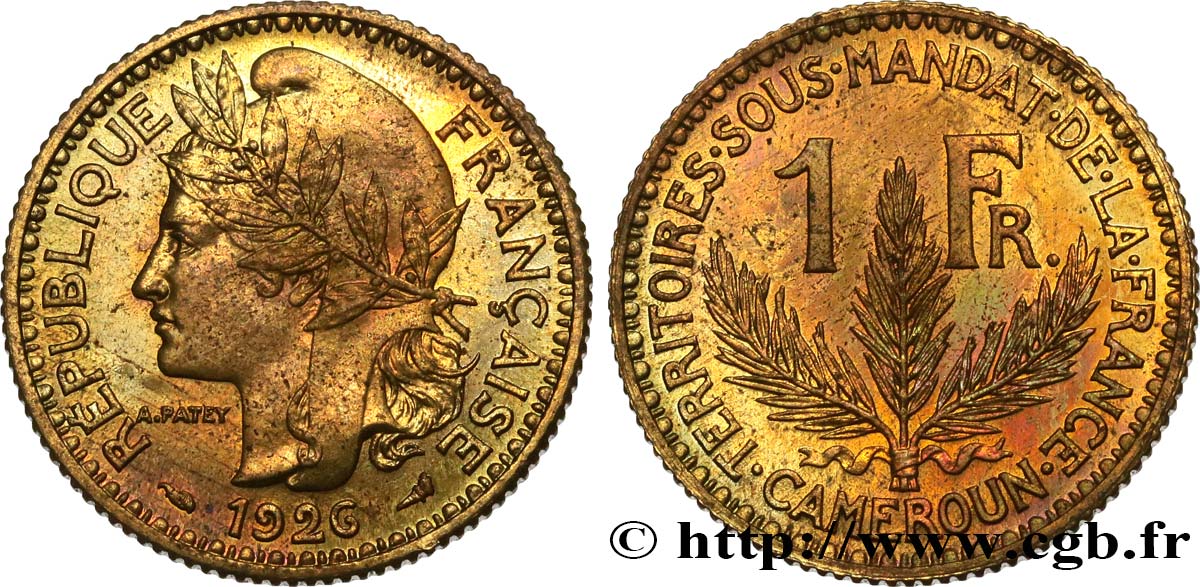
 Segnalare un errore
Segnalare un errore Stampate la pagina
Stampate la pagina Condividi mia selezione
Condividi mia selezione Fai una domanda
Fai una domanda Consegnare / vendere
Consegnare / vendere
 Descrittivo
Descrittivo